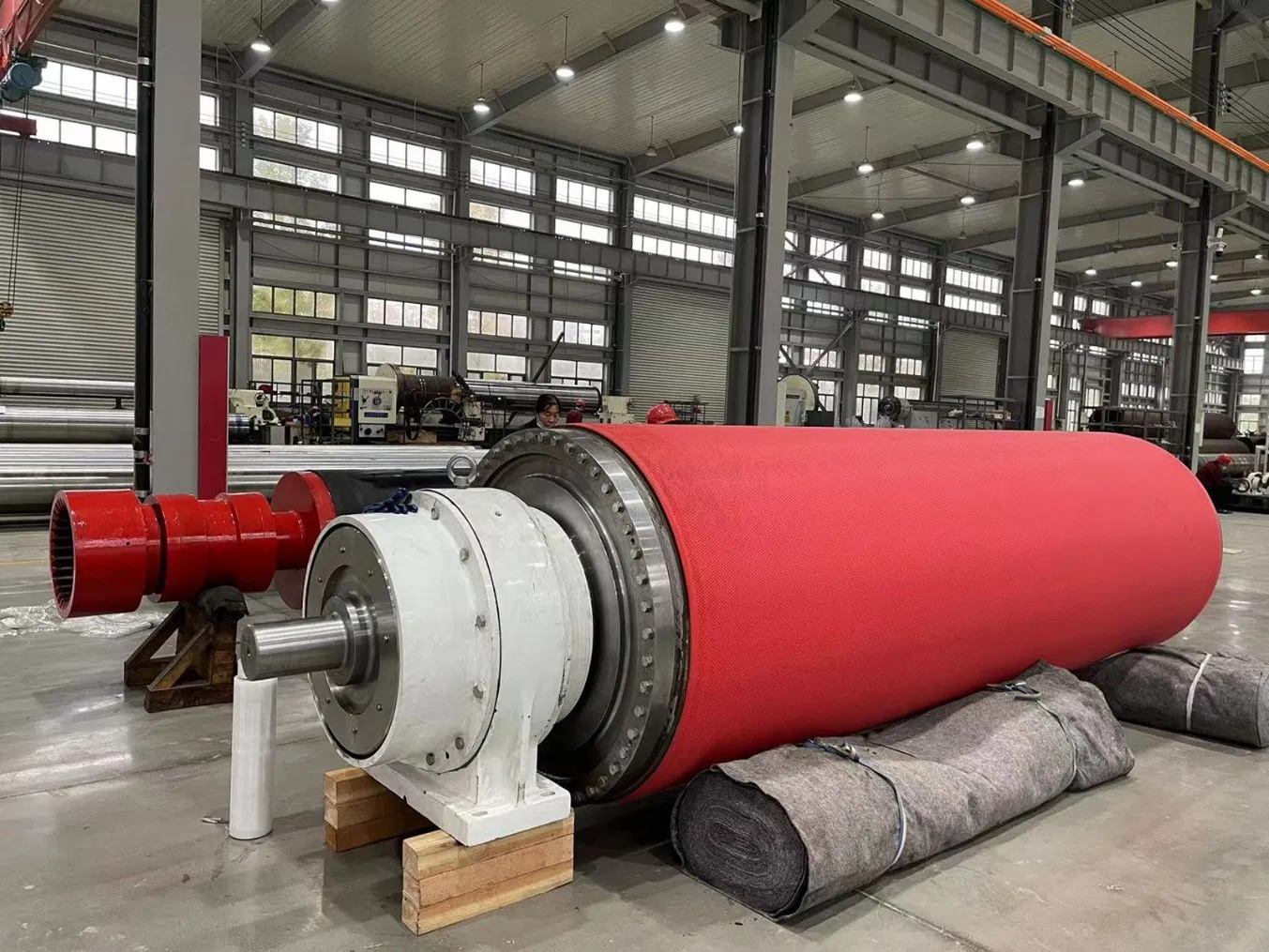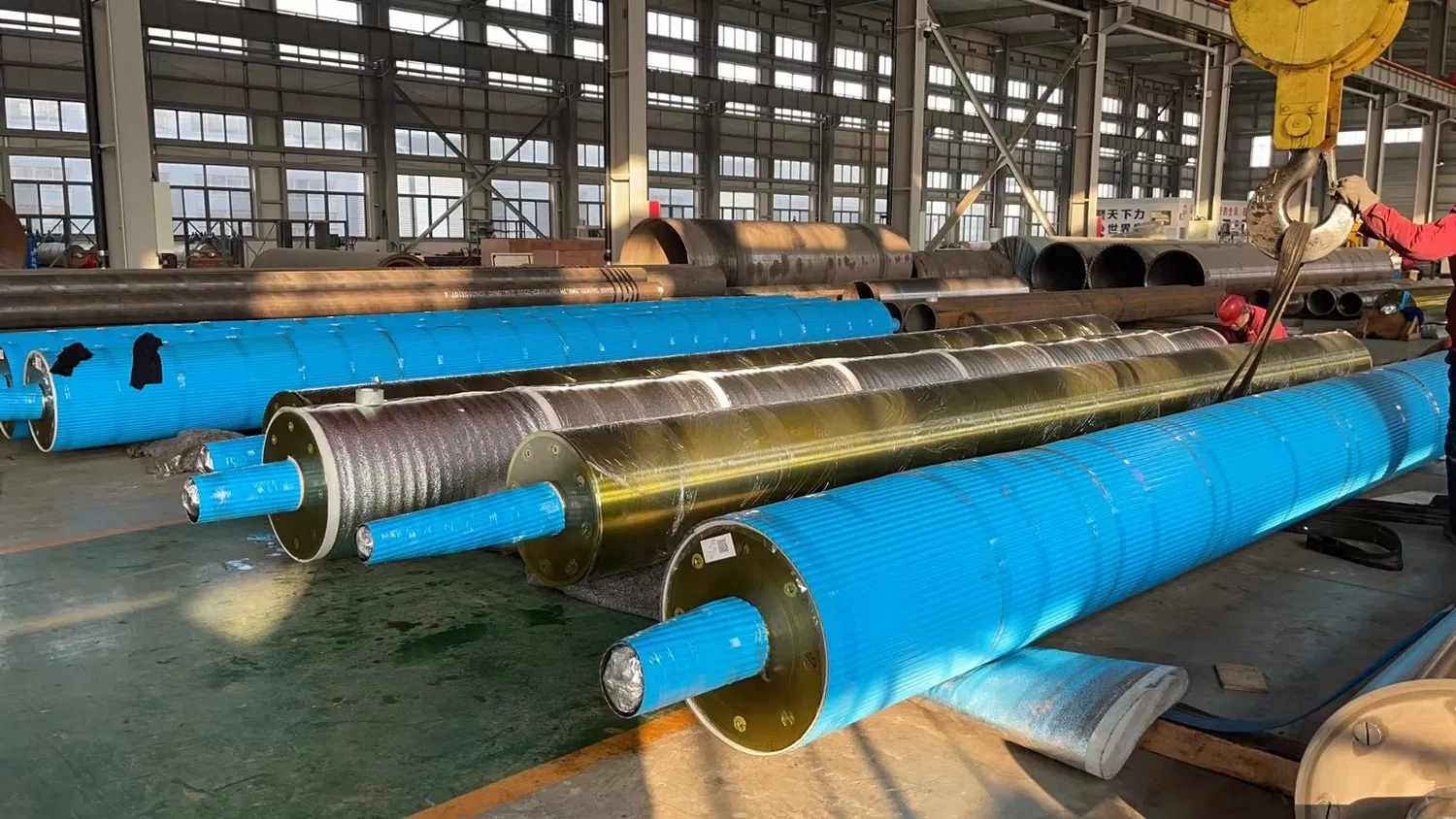In the complex and demanding world of papermaking, few components are as critical to operational efficiency and final product quality as the press roll. Specifically, the blind hole press roll plays a pivotal role in the dewatering process, directly influencing sheet consistency, machine speed, and energy consumption. Given its importance, the decision of who manufactures this vital asset is not one to be taken lightly. Choosing the right blind hole press roll manufacturer is a strategic investment that can yield significant returns in performance and reliability or, conversely, lead to costly downtime and production issues. It's a choice that extends far beyond the initial price tag, encompassing technical prowess, quality assurance, and long-term partnership. To be honest, a subpar roll can become a recurring nightmare for any production manager. This guide delves into the five most crucial factors to consider, ensuring you select a manufacturing partner that will contribute to your mill's success for years to come.
1. Evaluating a Manufacturer's Technical Expertise and Capabilities
The foundation of any high-performance blind hole press roll is the manufacturer's deep-seated technical knowledge and state-of-the-art manufacturing capabilities. This is, without a doubt, the most important factor. A premier manufacturer doesn't just assemble parts; they are masters of material science, precision engineering, and the intricate dynamics of the papermaking process.
Material Science and Selection
A roll's performance begins with its materials. A knowledgeable manufacturer will guide you through the optimal choices for both the roll shell and the cover. The shell—often made from stainless steel, bronze, or specialized alloys—must possess the strength to withstand immense nip pressures and the corrosion resistance to endure the harsh, wet environment. The manufacturer should have the expertise to recommend the ideal material based on your machine's specific operating conditions. Equally important is the roll cover, typically made of advanced rubber or polyurethane compounds. The right cover material, hardness (P&J), and surface finish are critical for efficient water removal, sheet release, and resistance to wear and chemical attack. A top-tier manufacturer will have a portfolio of proprietary cover compounds designed for various paper grades and machine speeds.
Drilling Precision and Technology
The "blind holes" are the functional heart of the roll, and how they are created is a testament to a manufacturer's precision. The diameter, depth, pattern, and even the angle of these holes are meticulously engineered to maximize water storage and evacuation without compromising the structural integrity of the roll cover or marking the sheet. Modern manufacturers utilize advanced CNC (Computer Numerical Control) drilling technology to ensure every hole is perfectly placed and consistent across the entire roll face. This precision is non-negotiable for achieving uniform dewatering and preventing operational issues. Ask potential manufacturers about their drilling technology and their process for optimizing the hole pattern for your specific application.

Dynamic Balancing and Grinding Finesse
As paper machines run at increasingly high speeds, the importance of dynamic balancing cannot be overstated. Even the slightest imbalance in a massive, rotating press roll can cause severe vibrations, leading to premature wear on bearings, damage to the machine frame, and quality defects like barring in the paper sheet. In my experience, a manufacturer’s commitment to high-speed dynamic balancing, often to ISO G1.0 standards, is a clear indicator of their quality commitment. Following balancing, the final grinding process is what creates the perfect roll profile (crown) and surface finish. This requires sophisticated grinding equipment and highly skilled technicians to achieve the precise tolerances needed for a uniform nip pressure profile across the sheet.
2. Scrutinizing Quality Control and Certification Standards
A manufacturer can talk about their technical skills, but their quality control (QC) systems and certifications are the proof. A robust quality management system (QMS) ensures that the high standards promised are delivered consistently with every single roll. It's the difference between hoping for quality and guaranteeing it.
ISO Certification and Documented Processes
Look for manufacturers who are ISO 9001 certified. This international standard demonstrates that the company has established and maintains a QMS focused on customer satisfaction and continuous improvement. It means their processes—from raw material procurement to final inspection—are defined, documented, and audited. This structured approach minimizes the risk of errors and ensures that if a deviation occurs, it is caught and corrected long before the roll reaches your facility.
Rigorous Inspection and Testing Protocols
A commitment to quality is evident in a manufacturer's testing regimen. This should include a battery of non-destructive testing (NDT) methods. For instance, ultrasonic testing should be used to verify the integrity of the roll shell and ensure there are no hidden defects from the casting process. For the cover, tests for hardness, adhesion to the shell, and material consistency are vital. A final, comprehensive dimensional inspection report, confirming that all specifications for diameter, crown, and runout have been met, should be a standard part of the documentation package provided with the roll.

Material and Process Traceability
In today's highly regulated environment, traceability is key. A first-class manufacturer should be able to provide complete traceability for all critical components and processes. This means they can trace the specific heat of steel used in the shell or the batch of polyurethane used for the cover back to its source. This documentation is invaluable for quality assurance, troubleshooting, and ensuring that any future service, like recovering, is done with perfectly matched materials.
3. The Importance of Customization and Engineering Support
No two paper machines are identical, even if they came from the same OEM. Each has its own unique operating history, challenges, and production goals. Therefore, a one-size-fits-all approach to press roll manufacturing is destined for mediocrity. A true partner offers deep engineering support and customization capabilities.
A Collaborative Design and Analysis Process
The best manufacturers act as consultants, not just order-takers. Their engineering team should engage with your mill's production and maintenance staff to understand your specific needs. They should be asking questions about the paper grades you run, your current machine speed, existing dewatering issues, and your goals for improvement. Many experts agree that this collaborative approach, often involving an analysis of your current roll's performance, is essential for designing a new roll that delivers a measurable upgrade, not just a like-for-like replacement.
Application-Specific Roll Design
Based on this collaborative analysis, the manufacturer should be able to tailor every aspect of the roll design. This could mean recommending a different blind hole pattern to combat sheet sealing, suggesting a novel cover compound to extend time between regrinds, or engineering a specific crown profile to correct a moisture imbalance. This level of customization is what separates a commodity supplier from a solutions provider. After all, isn't a partner who understands your unique challenges and engineers a solution for them more valuable than a simple supplier?
4. Assessing Industry Reputation and a Proven Track Record
In a capital-intensive industry like papermaking, reputation is earned over decades, not months. A manufacturer's track record provides a reliable glimpse into the performance, durability, and service you can expect from their products. It’s essential to look beyond the sales pitch and investigate their history of success.
Seeking Out Case Studies and Testimonials
A confident and successful manufacturer will have a portfolio of case studies to share. These documents should provide concrete data on how their blind hole press rolls have solved specific problems for other mills—whether it was increasing machine speed, improving sheet dryness, or extending cover life. Look for quantifiable results. Customer testimonials are also valuable, but direct industry references are even better. Don't hesitate to ask for a list of references from mills running similar applications to your own.
Longevity and Financial Stability
It's worth noting that a company's longevity in the industry often correlates with its reliability and the quality of its products. A manufacturer that has been operating for many years has likely navigated numerous economic cycles and technological shifts, demonstrating a stable and sustainable business model. This stability is important, as you are entering a long-term relationship that will involve service and support for the entire lifecycle of the roll.
5. Evaluating After-Sales Service and Lifecycle Management
The delivery of the press roll is the beginning of the relationship, not the end. The total cost of ownership extends far beyond the initial purchase price and is heavily influenced by the quality and availability of after-sales support. A manufacturer's commitment to lifecycle management is a critical factor in your decision.
Regrinding, Recovering, and Repair Services
Press roll covers are consumable items that require periodic regrinding to maintain their profile and surface. Eventually, they will need to be completely replaced. A key consideration is whether the original manufacturer provides high-quality, efficient regrinding and recovering services. Using the OEM for this service ensures that the correct cover compounds and processes are used, preserving the integrity of the roll. Furthermore, their ability to perform journal repairs and other mechanical services can make them a one-stop shop for all your roll maintenance needs, simplifying logistics and ensuring accountability.
Responsive Technical Support and Troubleshooting
When a problem arises with a critical press roll, you need fast and effective support. Evaluate a potential manufacturer's technical support capabilities. Do they have experienced technicians who can help you troubleshoot issues like vibration, barring, or unexpected wear? Is their team accessible and responsive? This support can be invaluable in minimizing downtime and resolving issues quickly.
Comprehensive Warranty and Guarantees
Finally, carefully review the manufacturer's warranty. A strong, clear warranty is a reflection of the manufacturer's confidence in their own product and processes. It should clearly define what is covered—from material defects to cover bonding—and for how long. This is your ultimate protection and a final, powerful indicator of the quality you can expect to receive.
In conclusion, selecting a blind hole press roll manufacturer is a multifaceted decision that directly impacts your mill's productivity and profitability. By moving beyond price and thoroughly evaluating these five key factors—Technical Expertise, Quality Control, Customization, Reputation, and After-Sales Service—you can forge a strategic partnership. This partnership will not only provide you with a high-performing, reliable component but will also support your operational goals for the entire lifecycle of the asset, ensuring your investment pays dividends for years to come.
For more detailed information, please visit our official website:blind hole press roll
About the author: Johnathan Reed is a Senior Industrial Engineer with over 25 years of experience specializing in paper machine optimization and rotating equipment. His work focuses on enhancing operational efficiency and component reliability in pulp and paper mills across North America. Johnathan is a passionate advocate for a holistic approach to equipment manufacturing and lifecycle management, helping mills achieve significant improvements in productivity and product quality through strategic partnerships with top-tier suppliers.


